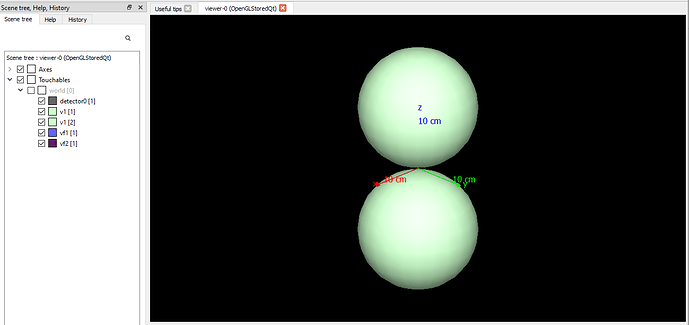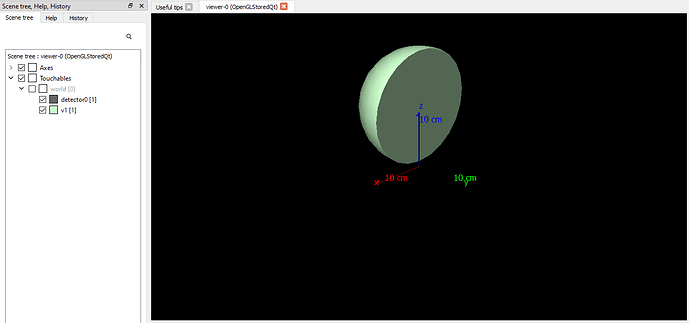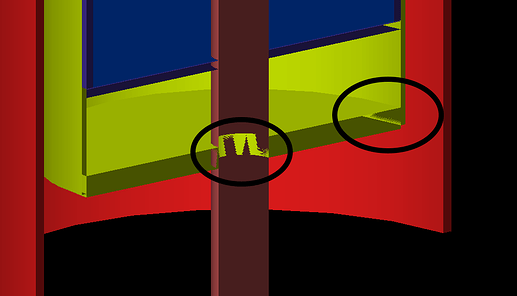Hello,
I have a question about the visiblity of touchables in Qt.
When I open the Qt GUI, I create a OGLSQt viewer and then I’m able to draw all the volumes in my geometry using the command /vis/drawVolume world.
Now, if I open the “Scene tree” tab in the GUI, i can change the visibility of the different touchables by clicking in their checkbox.
If I set the visibility of some touchables to FALSE and then I execute a run, these touchables disappear from the “Scene tree”.
To make them be there again I have to set their visibility to TRUE, but I have to do it one by one by setting the corresponding touchable and setting the vibility to true.
(/vis/set/touchable … and /vis/touchable/set/visibility true)
With this procedure I have to know the name and copy number of all volumes and set the visibility one by one.
Questions:
- Is it normal the the volumes disappear from the “Scene tree”, or I’m doing something wrong?
- Is there a way to set the visibility of ALL touchables to TRUE at the same time to make all of them reappear in the tree?
I hope that the problem is clear.
Any help is appreciated.
Thank you




